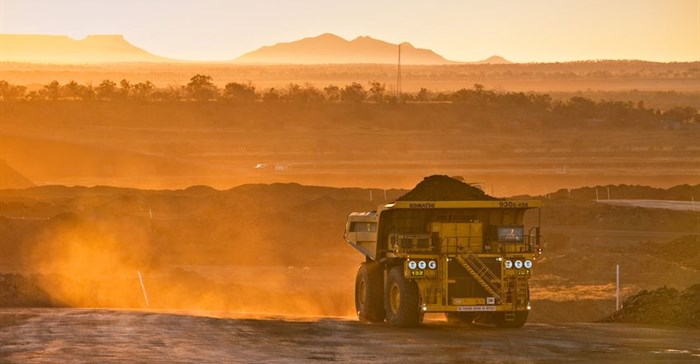Rain halts big work at big local mine

United Manganese of Kalahari (UMK), a joint venture between Renova and a number of local shareholders including the ANC's investment arm, Chancellor House, has had to declare force majeure at its mine near Hotazel.
SA is the world's biggest producer of manganese. A Transnet programme is under way to upgrade the capacity of the rail line between the Northern Cape mines and the Port of Ngqura, near Port Elizabeth, to 16-million tonnes a year by 2021 and build a new bulk terminal at the port. In its 2015-16 financial year, it transported 9.6-million tonnes.
UMK said on January 6 it was receiving abnormal rainfall, which had flooded its opencast pits and rendered haul roads unserviceable and unsafe. It was expecting to receive more rain last week.
It said pumping out excess water at the mines would begin as soon as feasible. It could take up to a week after rainfall ceased to restore normal operations. Supply of material to some contracted customers could be influenced, it warned. Other mines in the area were also affected, which could alter vessel loading slots at the port.
Transnet Freight Rail's senior manager of external affairs, Mike Asefovitz, said UMK's problems had a minimal effect on Transnet. Demand for manganese was high and it had been diverting trains to other mines.
"The heavy rainfall is impacting loading times at some of the mines but we are managing the situation," he said. Although take-or-pay contracts were in place between Transnet Freight and manganese miners, UMK was not in the penalty phase because of its good performance in the past year, Asefovitz said.
South32, another big manganese miner in the area, declined to comment because it would release quarterly production figures shortly. Manganese miner Tshipi é Ntle, in which Pallinghurst Resources is invested through Jupiter Mines, said it had not been affected.
UMK marketing manager John Joseph said despite manganese prices falling from recent highs of $8.40 a dry metric ton unit (dmtu) in 2016 to about 6-6.50/dmtu, it was well above the recent low of 1.50/dmtu.
In a recent presentation, South32 said manganese ore prices slid from 2014 to 2015 because of oversupply and destocking by customers but started to recover in late 2015 as stocks were depleted and ore supply tightened after production cutbacks. From April 2016, prices climbed steeply because of rail disruptions in SA, environmentally related stoppages of production in China, limited stocks and strong steel output.
South32 said in the longer term manganese intensity in steel was expected to decline as China's steel-production focus moved from construction to consumer products.
It expected China's high dependency on imports would continue as its domestic grades were declining and its ore bodies were being depleted.
"Future marginal supply is likely to come from SA, where the rand/dollar rate will impact the cost curve," it said.
Source: Business Day
Source: I-Net Bridge

For more than two decades, I-Net Bridge has been one of South Africa’s preferred electronic providers of innovative solutions, data of the highest calibre, reliable platforms and excellent supporting systems. Our products include workstations, web applications and data feeds packaged with in-depth news and powerful analytical tools empowering clients to make meaningful decisions.
We pride ourselves on our wide variety of in-house skills, encompassing multiple platforms and applications. These skills enable us to not only function as a first class facility, but also design, implement and support all our client needs at a level that confirms I-Net Bridge a leader in its field.
Go to: http://www.inet.co.za













